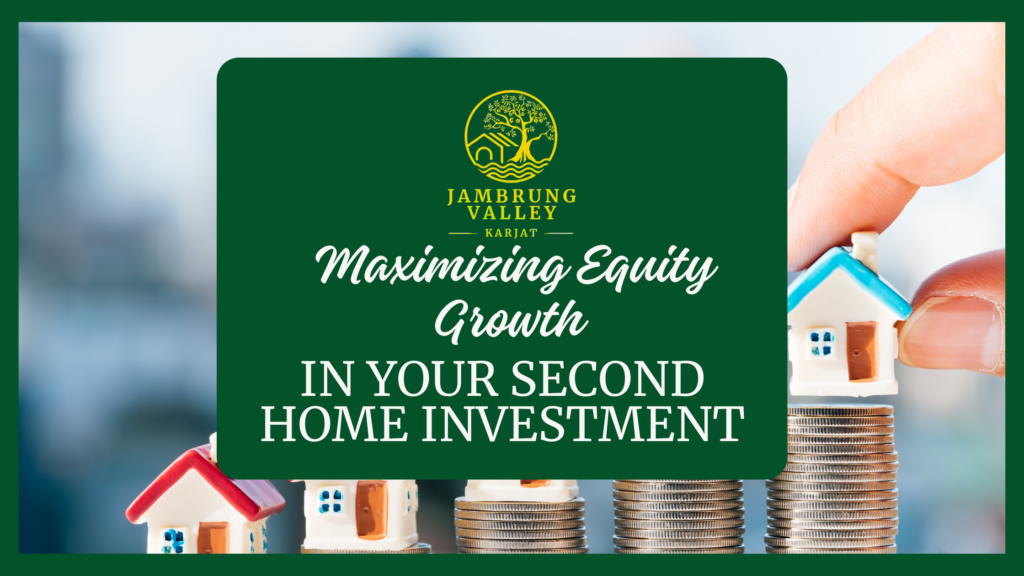
Investing in a second home provides not only a comfortable retreat but also a lucrative opportunity to build wealth through growing property equity. By focusing on key strategies that accelerate equity growth, we can make our second home investment more profitable, with greater returns over time.
1. Optimize Property Location and Type for Higher Equity Growth
Selecting the right location and property type is the foundation of maximizing equity in a second home. Ideal locations offer high demand for vacation rentals or seasonal stays, promising higher market appreciation. Areas with steady tourism, proximity to natural attractions, and strong economic growth tend to experience faster property value increases. Popular property types, such as villas in waterfront homes, often enjoy higher demand, making them profitable choices for second home investments.
Conduct thorough market research to assess the potential appreciation in various locations. Comparing historical data on property values in different regions can help us identify areas with higher appreciation potential. Investing in the right location from the start is critical in setting the foundation for maximizing equity in your second home.
2. Make Strategic Home Improvements for Value Boosts
Upgrading and improving your second home is an effective way to add value and build equity. Not all renovations yield the same returns, so focus on strategic improvements that attract renters or enhance the property’s appeal. Kitchen and bathroom upgrades, energy-efficient installations, and landscaping improvements are excellent examples of upgrades that add substantial value. High-return improvements often include:
- Modernizing kitchens and bathrooms with quality fixtures and appliances
- Adding energy-efficient windows and insulation to reduce utility costs
- Upgrading flooring, lighting, and finishes for a modern aesthetic
- Landscaping enhancements that improve curb appeal and outdoor enjoyment
By choosing projects that deliver a high return on investment (ROI), we can improve the property’s market value and attract renters willing to pay premium prices, contributing to faster equity growth.
3. Take Advantage of Favorable Mortgage Terms
Understanding and optimizing your mortgage terms can help maximize equity. Opt for a shorter loan term when possible, as it allows you to pay off the mortgage principal faster, which builds equity more rapidly. A 15-year mortgage, for instance, usually carries a lower interest rate than a 30-year mortgage, leading to significant savings on interest payments over time.
Refinancing when interest rates are lower is also a smart strategy. This can reduce monthly payments, allowing you to pay off your loan more efficiently while maintaining cash flow for other equity-building activities. By choosing favorable financing options, we can accelerate equity accumulation while minimizing long-term interest expenses.
4. Prioritize Regular Property Maintenance and Care
Maintaining your property’s condition is vital for protecting its value and maximizing equity. Properties that are well maintained attract more renters, achieve better rental income, and maintain a higher market value. Routine inspections and preventive maintenance ensure that small issues don’t escalate into costly repairs. Key maintenance areas include:
- Roof and exterior upkeep to protect from weather damage
- Plumbing and electrical systems to ensure consistent utility functionality
- HVAC systems to maintain energy efficiency and comfort
- Interior updates to keep the property modern and appealing
By prioritizing these maintenance aspects, we can ensure the property remains attractive, functional, and marketable. This proactive approach helps prevent depreciation and supports steady value growth over time.
5. Utilize Tax Benefits for Increased Returns
Owning a second home opens the door to several tax deductions that can improve overall returns on investment. Deductions on mortgage interest, property taxes, and even certain maintenance costs can offset annual expenses, freeing up capital to pay down the mortgage or reinvest into the property. If the property is rented out part-time, we may be able to deduct a portion of the utilities, repairs, and management expenses associated with the rental income.
It’s crucial to consult with a tax professional to understand the full range of deductions available for a second home, as these benefits can vary based on factors like usage and rental frequency. By leveraging tax benefits, we can reduce costs and direct additional funds into building equity faster.
6. Make Extra Principal Payments on Your Mortgage
One of the simplest yet most effective ways to build equity in your second home is by making extra payments on the mortgage principal. Even small additional payments can significantly reduce the loan term and save on interest expenses, accelerating the equity growth. Consider making extra payments monthly, quarterly, or annually, depending on your budget.
Automatic payments or biweekly mortgage payments can further reduce the interest paid over time. By shortening the loan duration, we can rapidly increase the ownership share in the property, contributing to faster equity growth without requiring any major lifestyle adjustments.
7. Leverage market appreciation for Long-Term Growth
Market appreciation, influenced by economic conditions, demand, and location, is one of the primary drivers of equity growth. In regions experiencing high growth, property values tend to appreciate steadily, providing substantial equity gains over time. In a market like Karjat, for example, properties near popular natural attractions and tourism spots have demonstrated appreciation trends, making it a smart investment destination.
By tracking the property market and staying informed on local trends, we can understand when appreciation may peak, allowing us to time potential selling or refinancing decisions effectively. Investing in high-growth markets with historical appreciation can make a significant difference in long-term equity accumulation.
8. Consider Refinancing to Access Home Equity
Once substantial equity has been built, refinancing can be an option to access that equity without selling the property. Cash-out refinancing enables us to borrow against the equity and reinvest the funds into property improvements, other investments, or even additional real estate purchases. This strategy keeps the asset in your portfolio while allowing you to capitalize on the equity already built.
Refinancing works best when the market offers lower interest rates than your current mortgage. By accessing equity while maintaining ownership, we can grow a real estate portfolio and further enhance wealth-building opportunities.
Maximize Equity and Unlock Financial Potential in Your Second Home
Building equity in a second home investment requires a combination of strategic upgrades, consistent maintenance, smart financing, and market insight. With these actionable steps, we can enhance our property’s value, generate income, and maximize returns on our investment. For second homes in prime locations like Jambrung Valley, the opportunity for equity growth is even greater due to strong market appeal and appreciation trends. By following these methods, we can make the most of our second home as a lasting asset and a powerful wealth-building tool.



